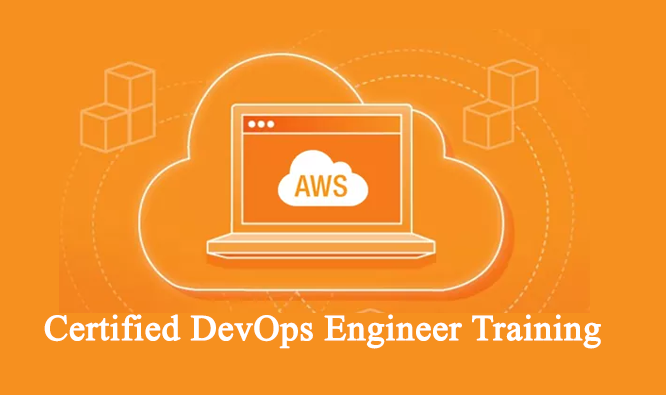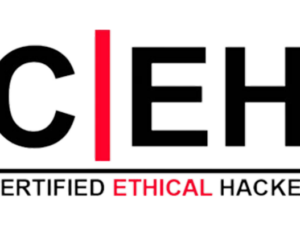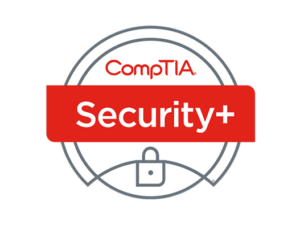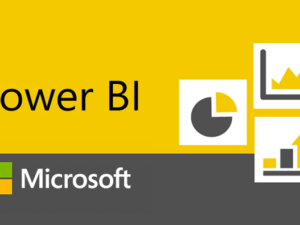- Domain 1: SDLC Automation
- Domain 2: Configuration Management and Infrastructure as Code
- Domain 3: Monitoring and Logging
- Domain 4: Policies and Standards Automation
- Domain 5: Incident and Event Response
- Domain 6: High Availability, Fault Tolerance, and Disaster Recovery
AWS Certified DevOps Engineer Training
- Description
- Curriculum
- FAQ
- Reviews

- Use the principal concepts and practices behind the DevOps methodology
- Design and implement an infrastructure on AWS that supports one or more DevOps development projects
- Use AWS CloudFormation and AWS OpsWorks to deploy the infrastructure necessary to create development, test, and production environments for a software development project
- Implement several common Continuous Deployment (CD) use cases using AWS technologies, including blue/green deployment and A/B testing
- Distinguish between the array of application deployment technologies available on AWS, including AWS OpsWorks, AWS Elastic Beanstalk, Amazon Elastic Container Service, and Amazon Elastic Container Registry
- Use Amazon EC2 Systems Manager for patch management
- Leverage automated testing in different stages of a CI/CD pipeline
- Fine-tune the applications you deliver on AWS for high performance and use AWS tools and technologies to monitor your application and environment for potential issues
The following professionals can go for this course:
- System Administrators
- Software Developers
- Cloud Professionals
- Solution Architects
- Project Manager
- Technical Lead
- Working knowledge of DevOps and Amazon Web Services
- Familiarity with AWS Development or AWS System Administration
- Working knowledge of one or more high-level programming languages, such as C#, Java, PHP, Ruby, or Python
- Intermediate knowledge of administering Linux or Windows systems at the command-line level
- Working experience with AWS using both the AWS Management Console and the AWS Command Line Interface (AWS CLI)
-
1Introduction To DevOps On Cloud
Learning Objectives: In this module, you will be introduced to important aspects of DevOps and Amazon Web Services. Also, you will get to know about the necessary security concepts required to manage your account and data on the AWS platform.
Topics:
- Understanding DevOps and its lifecycle
- Why DevOps on Cloud?
- Introduction to AWS
- DevOps using AWS
- Security Management - IAM (Identity and Access Management), WAF (Web Application Firewall), AWS Shield, Guard Duty
- Trusted Advisor
- Governance Strategies
Hands-on:
- Creating Policies for a new user to have all Admin Or Limited Privileges
- Login AWS Management Console via MFA
- Trusted Advisor
- Enabling Governance using AWS Config
- Set Alerts and Budget for your AWS Account
-
2SDLC Automation
Learning Objectives: In this module, you will learn how to automate Software Development Lifecycle using various AWS development tools.
Topics:
- CodeCommit
- CodeBuild
- CodePipeline
- CodeDeploy
- AWS CodeStar
Hands-on:
- Working of Code Commit
- Deploy an application using Codepipeline
-
3Automating Infrastructure With CloudFormation
Learning Objectives: In this module, you will be introduced to important aspects of CloudFormation. Along with it, you will also learn how to use CloudFormation Templates to model and provision the AWS resources in an automated and secure manner for your application.
Topics:
- Introduction to CloudFormation
- CloudFormation Template
- Intrinsic Functions & Conditions
- Stack Creation
- Advanced CloudFormation Concepts - CloudFormation Nesting, CloudFormation Wait Conditions & Wait Condition Handlers, CloudFormation Helper Scripts, CloudFormation Custom Resources
- CloudFormation Stack Updates
- CloudFormation Resource Deletion Policy
- CloudFormation Best Practices
- Troubleshooting
Hands-on:
- Creating an S3 Bucket using CloudFormation by Hardcoding the Name
- Creating an S3 Bucket using Intrinsic Function (Join And Ref)
- Creating and Configuring EC2 Instance using Helper Scripts
- Creating a Custom Resource with the help of Lambda Function
-
4Application Deployment Using Elastic Beanstalk
Learning Objectives: In this module, you will learn various aspects of Elastic Beanstalk. Also, you will learn how to deploy and Monitor your application in Beanstalk.
Topics:
- Introduction to Elastic Beanstalk
- Components of Beanstalk
- Deployment Option
- Platform Updates
- Docker in Elastic Beanstalk
- Extending Beanstalk using extensions
- Alarms and Notification
- Troubleshooting
Hands-on:
- Deploy a Web application with DynamoDB using Beanstalk
- Deploy an application in beanstalk using Docker
- Immutable deployment of the application in Beanstalk
- Creating cron-job on beanstalk instances using .ebextensions
-
5Configuration Management Using OpsWorks
Learning Objectives: In this module, you will get to know the nitty-gritty of AWS OpsWorks and learn how to create stacks and manage configuration with AWS OpsWorks.
Topics:
- Introduction to OpsWorks
- Components of OpsWorks
- Cookbooks, Recipes, Data bags and Berkshelf
- OpsWorks Lifecycle Events
- OpsWorks Deployment
- OpsWorks Auto-Healing
- Troubleshooting
Hands-on:
- Deploy an application in OpsWorks Stack
- Integration of CloudFormation with OpsWorks
-
6Automate Monitoring And Event Management In AWS
Learning Objectives: In this module, you will understand how to implement the concepts of continuous monitoring and management using CloudWatch and CloudTrail. You will also learn to set-up event-driven automated actions.
Topics:
- Introduction to CloudWatch
- CloudWatch Metrics: EC2, ELB, and Auto Scaling metrics
- Custom Metrics
- CloudWatch Alarms
- CloudWatch Agent
- CloudWatch Logs
- Introduction to CloudTrail
- System Manager
- Tagging
- Concepts required to set-up event-driven automated actions - Lambda, SNS, Autoscaling
Hands-on:
- Configure Amazon CloudWatch to Notify when CPU Utilization of an Instance is greater than 85%
- Enable CloudTrail and store Logs in S3
-
7High Availability, Fault Tolerance And Disaster Recovery
Learning Objectives: In this module, you will learn how to implement highly available and fault-tolerant systems. Also, you will be introduced to Disaster recovery strategies which are effective in making your system resilient at any point of failure.
Topics:
- EBS
- Elastic IP
- Multi region and multi AZs
- SQS
- Data Management in Amazon RDS
- Dynamo DB
- S3
- Provisioning elasticity using Load Balancer and Auto-Scaling
- Components of Auto Scaling
- Horizontal and vertical scaling
- Auto-Scaling Lifecycle
- Recovery Time Objective and Recovery Point Objective
- Disaster Recovery Options
- Overcome single Point of Failure
Hands-on:
- Working of Load Balancer and Auto-Scaling to support highly available and fault tolerant system
-
8Container Management Tools
Learning Objective: In this module, you will learn about container management tools like Elastic Container Registry (ECR), Elastic Container Service (ECS) and Fargate.
Topics:
- Orchestration
- Elastic Container Service
- Amazon ECR
- Select a Launch type for your application
- ECS with EC2
- ECS with Fargate
Hands On:
- To Push An Image Into ECR
- To host a website inside ECS using Fargate launch type
-
9AWS Certified DevOps Engineer Exam Discussion (Self-paced)
Learning Objectives: This module focuses on exam questionnaires along with guidance on preparing for the AWS Certified DevOps Engineer Exam.
Topics:
- AWS Certified DevOps Engineer Exam Guide
- Certification Exam Questionnaires
View the recorded session of the class available in your LMS.
You can attend the missed session, in any other live batch."







